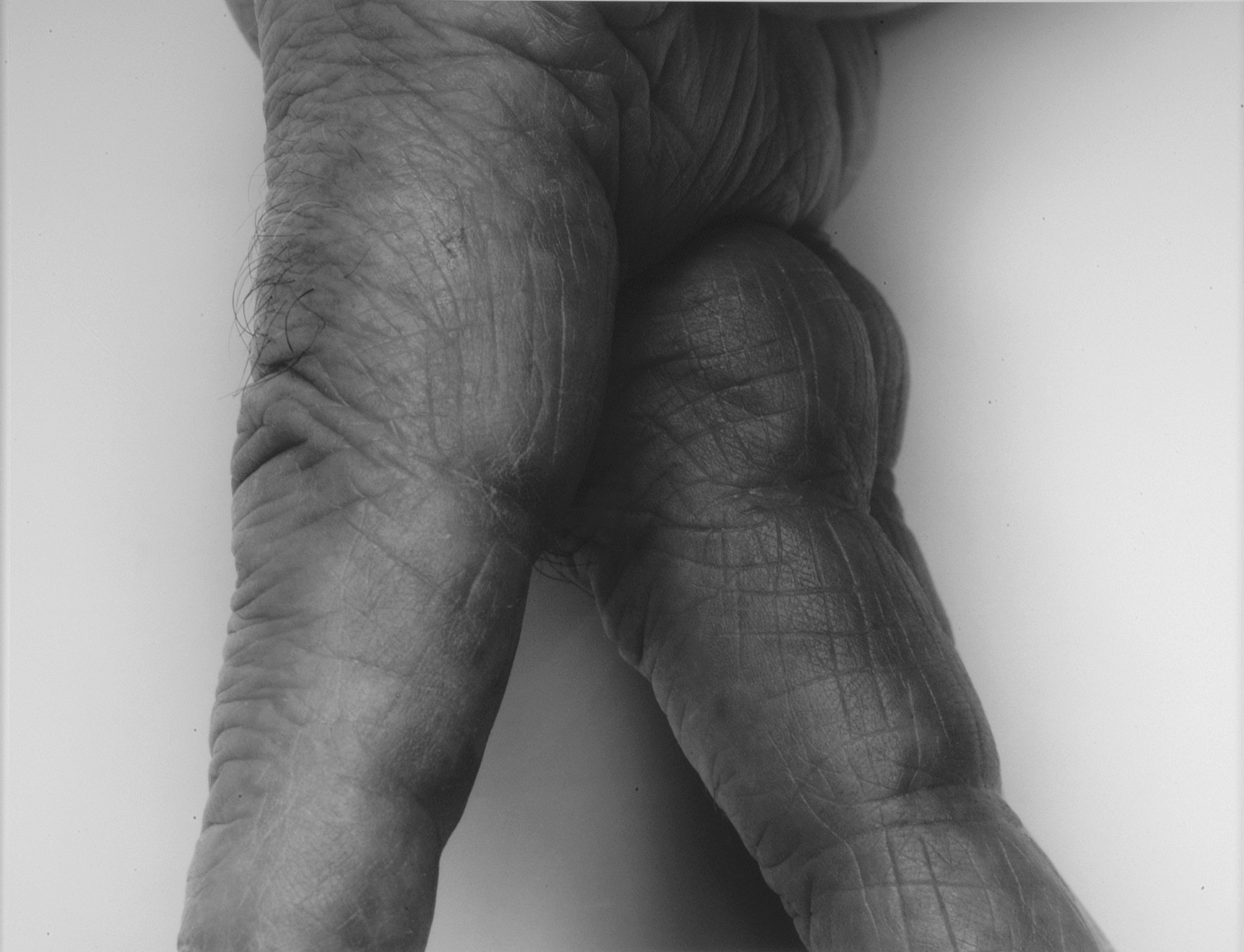John Coplans
(London, England, 1920 - 2003, New York, New York)
Fingers Walking
1999 (printed 2002)
Selenium toned gelatin silver print
24 x 31 in. (61.0 x 78.7 cm)
Collection of the Akron Art Museum
Gift of Herbert Bard
2002.32
More Information
“So my subject matter is very ordinary. An old man’s body? There are millions of them,” declared John Coplans, who was in his sixties when he became a photographer. He had already been a painter, art critic, curator, editor of an art magazine and director of two art museums, including the Akron Art Institute in 1978-79. Coplans was his subject matter. He turned his camera on his own naked, aging, hairy, paunchy body. Youthful, idealized female forms dominate not only the contemporary mass media but also the tradition of the nude in the history of art. Coplans flouted those conventions. He sometimes described his self-portraits in terms of art history, referring to Self-Portrait (Torso, Front) as "a seventeenth-century drawing of a face." Coplans also claimed to have an overriding interest in formal issues including “frontality, size, scale, edge tension, drawing – the idea that one can draw with the camera.” Those art historical references and formal characteristics enhance the expressive power of Coplans’ already loaded subject matter. His larger-than-life prints magnify parts of the body while also radically cropping and isolating them. Interlocking fingers become an alien creature or a wild abstraction; walking fingers seem to whistle as they stroll along. The body in these photographs may be ordinary, but Coplans transforms it into an extraordinary vehicle for wit, surrealism and social comment.
Keywords
Black and WhiteAmerican
Contemporary Art
Hand
Photography
Gelatin Silver

